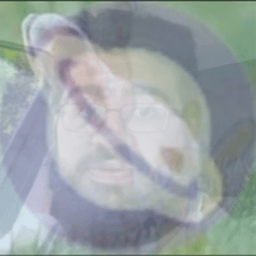Regular height, but it was on the ISS.
- 4 Posts
- 348 Comments
Yeah, that’s my plan. I usually end up with a couple of flatpaks (or AppImages) for the things that I need up to date, but otherwise just go with most things from the repository.
I was thinking of switching away from Arch and back to something Debian-based. I’ve never been a big fan of flatpaks (I have a background of not having fast internet or much storage space, it’s just stuck with me) and I never used the AUR anyways.
I mainly tried Manjaro to try the bleeding-edge life, and while I do enjoy having more up-to-date packages, I do miss being able to install DEB packages. I think I might try Debian testing and see how that goes.
Good to know! I was considering switching back to Debian or Mint, maybe LMDE. I’ll look further into it. Thanks for the tip!

 35·9 days ago
35·9 days agoAs a father of 2 kids, I can say that this is less obnoxious than about a dozen things we’ve been given.
Manjaro for my laptop, Mint for my HTPC, and Debian for my servers.

 9·12 days ago
9·12 days ago…Abigale?

 1·15 days ago
1·15 days agoSurprise, I’m both!

 1091·16 days ago
1091·16 days ago“What’s your gender?”
“Canadian.”
“No, who do you like?”
“Donuts.”
“No no, what’s in your pants?”
“Polite manners.”

 4·19 days ago
4·19 days agoYeah, it’s about how electromagnetic energy travels through space.

 132·19 days ago
132·19 days agoIf AB = i and BC = 0, then B would be in the same 2D space as C, but one of them would be “above” the other in 3D space (which doesn’t exist in this context, just as sqrt(-1) doesn’t exist in the traditional sense).
So this triangle represents a 2D object that is “standing up” on the page.

 331·19 days ago
331·19 days agoThe short version is: we use some weird abstractions (i.e., ways of representing complex things) to do math and make sense of things.
The longer version:
Electromagnetic signals are how we transmit data wirelessly. Everything from radio, to wifi, to xrays, to visible light are all made up of electromagnetic signals.
Electromagnetic waves are made up of two components: the electrical part, and the magnetic part. We model them mathematically by multiplying one part (the magnetic part, I think) by the constant
i, which is defined assqrt(-1). These are called “complex numbers”, which means there is a “real” part and a “complex” (or “imaginary”) part. They are often modeled as the diagram OP posted, in that they operate at “right angles” to each other, and this makes a lot of the math make sense. In reality, the way the waves propegate through the air doesn’t look like that exactly, but it’s how we do the math.It’s a bit like reading a description of a place, rather than seeing a photograph. Both can give you a mental image that approximates the real thing, but the description is more “abstract” in that the words themselves (i.e., squiggles on a page) don’t resemble the real thing.

 302·19 days ago
302·19 days agoThis is pretty much the basis behind all math around electromagnetics (and probably other areas).
It can tell 'cause of the way it is.
Some majors are straight-up pyramid schemes. If the only thing you can do with a major is to teach it to others, it’s a pyramid scheme.

 21·22 days ago
21·22 days agoAh, that would definitely make a difference. A debit transaction uses some form of “password” like a PIN or the data embedded in a card chip. A credit transaction technically only relies on easily available data and sometimes a signature, much more common for fraud (it’s pretty easy to read and replicate the data from a magnetic strip–one of my classmates did a project to read magnetic strips, and they had to stop letting people swipe their own cards on it because it popped up tons of confidential data).
My CU’s website definitely looks like it’s from the early naughts, but they at least kept things up to date and security practices seemed legit, and I don’t think I ever tripped the fraud detector. I guess everyone’s mileage will vary a bit.
I think the question “do the ends justify the means” is meant to invoke exactly what you’re describing. What you call the “desired end state” is what the question means by “the end.” The question is framing exactly what you’re saying: the path of reaching a desired outcome includes everything it takes to get there–is it still a desirable end? Is the entire path justified, given the intermediate consequences?
I’m guessing it’s worded this way because we apply this question/principle to situations where the “end” is altruistic but the “means” are not, and it’s specifically asked because people want to separate the two to ignore the moral/ethical implications of the means. The entire point of the question/principle is that the end cannot be separated from the means with regard to whether it is ethical.

 32·22 days ago
32·22 days agoThey’re common in Canada as well. In my experience, they’re much better than larger banks for things like fees and interest rates.
Historically the main advantage of a larger bank was having banks and ATMs everywhere, but lots of CUs have formed mutual agreements for ATM access, and internet banking being ubiquitous has rendered any advantage the big banks have had moot (in my opinion, at least).





The new favorite language of AAA game studios:
PhytonPython